What Does Christian Speculative Fiction Do With Jesus?
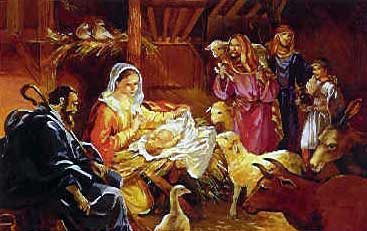
At Christmas when we celebrate Jesus making His appearance here on earth, it seems appropriate to look at how He makes an appearance in Christian speculative fiction.
I’ve read any number of Christian fantasies that include a god figure or perhaps even God Himself. For example Donita Paul’s DragonKeeper Chronicles identifies the God of that world as Wulder; Karen Hancock’s Guardian-King series names God as Eidon, and Sharon Hinck’s The Sword Of Lyric series calls Him, the One.
What I don’t recall as easily is a representation of Jesus.
Clearly C. S. Lewis created the most memorable representation of Jesus in his Narnia series in his character Aslan. But other stories don’t seem to include Jesus as clearly. Should He be as He is in reality, but given a different name? Should He be absent, since in the fantasy world, God (by whatever name He’s given) deals with those people in different ways? Or is the story perhaps mirroring the world before Christ came? Or should He appear with His own name, as the Jesus we know, revealed in Scripture?
The issue of Jesus in fiction can create problems. On one hand stories that seem allegorical run into readers’ attitudes toward a story dependent upon that literary device. On the other hand, stories that do or don’t include Jesus in some form face theological scrutiny. The former must conform to the reality of Scripture and the latter must deal with the absence of God’s means of reconciling humankind to himself.
I thought it would be interesting to look at a variety of Christian speculative stories, some self-published, some traditionally published, and see what the authors did with Jesus. I sent out a survey to a few authors which included questions about God and about the Holy Spirit, but today I’m focusing on Jesus.
Some authors chose to include an allegorical character that represents Jesus. Some chose to show him by utilizing a type or types—“a person or thing symbolizing or exemplifying” Christ (like King David was a type of the one-day-returning-and-reigning King, Jesus). Some decided, for a variety of reasons, not to have Jesus in their stories. The specific question the authors answered was, “Do you have a character representative of Jesus in your story? If so, who?”
First the ones that would be most nearly considered allegorical.
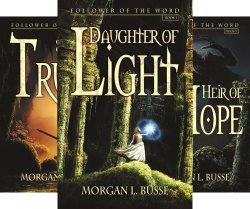 Morgan Busse, in her fantasy Follower of the Word series:
Morgan Busse, in her fantasy Follower of the Word series:
Yes. He is known as the Word, the one who spoke the world into existence and continues to speak, thus holding the world together. I also borrowed from the old story The Rag Man and instead of a divine character dying for mankind, the Word takes on a character’s darkness which leaves a scar on his body.
R. J. Larson in her fantasy The Infinite series: Prophet, Judge, King, Exiles, Queen, DownFallen, Valor.
Obliquely, referred to as, “the Promised One” and “the High Priest.”
Yvonne Anderson in her “soft sci-fi” four-book series Gateway to Gannah:
Not a Christ figure, but Christ, who is called the Yasha, which means “the Redeemer” in the language of Gannah.
Sharon Hinck in her fantasy The Sword Of Lyric series utilized both an allegorical representative, though future, and types:
Yes ‚Äď- there is a promise of a coming ‚ÄúDeliverer‚ÄĚ throughout the people‚Äôs history. While they wait for Him, the One sends various Restorers. Just as old-testament judges and prophets and kings were ‚ÄúChrist-types‚ÄĚ — giving hints at the role of the Messiah to come, the Restorer‚Äôs are a forerunner to the Deliverer.
C.E. Laureano‘s Celtic series The Song of Seare:
Lord Balus, who plays the same role in the world’s salvation message as Jesus does in our world.
Keanan Brand‘s high fantasy duology The Lost Sword, consisting of Dragon’s Rook and the yet to be published Dragon’s Bane:
There will be [a Jesus figure] in history/holy writ in the second book: A prince who has to outward reason to do so will step into a plague-riddled war and take onto himself the ills of the people.
Christopher Miller in the middle grade fantasy Codebearers Series:
Jesus: Aviad
Other authors use a type. This is the approach J. R. R. Tolkien took, I believe. He showed Christ as the sin-bearer in Frondo who bore the One True Ring to Mount Doom. He showed the resurrected Savior in Gandalf. He showed Christ as the soon and coming king in the character of Strider, also known as Aragorn.
Here are the survey answers from authors who more or less brought Christ into their stories through the use of a type.
In Patrick Carr‘s high fantasy series The Staff And Sword and in the new Darkwater Saga:
In The Staff and the Sword, Jesus is symbolized by my main character, Errol. Errol is an appropriate name because it means wanderer and in the story, Errol never gets to stay in one place until the very end. I wrote it this way with the verse ‚Äúbut the Son of Man has no place to lay his head‚ÄĚ in mind. In addition, in each book, I made sure the consequences of other people‚Äôs sins (mistakes) ended up on Errol‚Äôs shoulders. I also tried to make him as human as possible. But this explanation would be incomplete without talking about Liam. While Errol represents Christ in his first incarnation, Liam represents him in his second. Thus the incredibly appropriate title of the series ‚ÄúThe Staff and the Sword.‚ÄĚ Errol‚Äôs preferred weapon of choice was the staff, symbolizing Christ in his first coming, while Liam was a master of the sword without equal, symbolizing Christ when he returns. This dual representation of Christ also helps to explain the very end of the trilogy.
In The Darkwater Saga, Jesus is represented by my main character, Willet, though in a much less overt way.
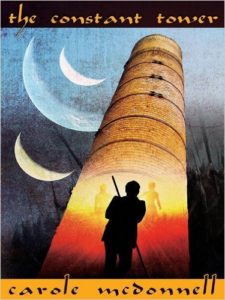 In Carole McDonnell‘s fantasy The Constant Tower:
In Carole McDonnell‘s fantasy The Constant Tower:
Yes. My character Psal. Psal is not exactly Jesus but he is a Firstborn who is despised and rejected of men. I wanted to have the savior of his people, and indeed the savior of the world, be someone who had nothing in him that others would praise. He also had to be prophetic in that he would argue against the falsity he found among his own clan. And of course he would be an unsuspected destined one.
Scott Appleton‘s The Sword of the Dragon series and Neverqueen:
There is no physical representative of Jesus in the series as of yet, in a literal sense that is. A trinity of prophets work in the real world of my series. A dragon, an invisible creature, and a shepherd. They are a type of allegory but not directly. It was my intention that they reflect the character of God as he directs them in the world.
Rachel Starr Thompson in her various fantasies, classic, contemporary, and historical, respectively The Seventh World Trilogy, The Oneness Cycle, and The Prophet Trilogy:
Only in The Seventh World Trilogy, where . . . the Christ figure is the King. In my other stories there are characters who take on messianic qualities or works, but I wouldn’t call them representative of Jesus particularly.
Perhaps the most interesting use of types is Stever Trower‘s in his science fiction Countless as the Stars:
Being a retelling of an Old Testament story, there is no Jesus as such, unless you consider some of the angelic appearances in the OT (such as the ‘three visitors’ in Genesis 18) to be a pre-incarnate Christ. This angelic messenger role is taken in my story by the mysterious Lex — whose name is a not-so-subtle nod to the Word become flesh (John 1:14).
L. B. Graham in his fantasy series The Binding Of The Blade utilized “type” in a unique way:
Yes [there is a Christ figure] & No. There is no Trinity, no God incarnate on earth, no true picture of the 2nd member of the Trinity. On the other hand, the notion of “self-sacrifice,” of laying yourself down to ‘redeem,’ of the great but paradoxical idea of ‘strength that stoops to conquer’ so that in surrender to death a great victory is won, then yes, there are character(s) that represent Jesus, the most notable of which is a prophet named “Benjiah,” who lays his life down to win the ultimate victory.
Nadine Brandes in her Out of Time Series (book one, A Time to Die and book two which released in October, A Time to Speak) takes a similar approach:
I don’t really have a Jesus figure, but there is a character who represents some aspects of Christ the way a flawed human should do. His name is Jude.
A third category of stories includes Christ as He is.
Bryan Davis in all his stories, most fantasy, some science fantasy, and one dystopian:
In most of my stories, Jesus is the real Jesus. He is on-screen twice in brief appearances. All other references are by verbal mention.
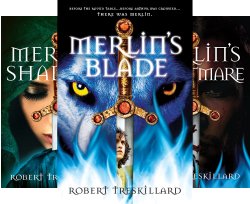
Robert Treskillard in his historical fantasy books about Merlin:
Because I’m writing historical fiction with fantasy elements, I’m able to actually speak about God, Jesus, and the Holy Spirit using their normal names, though sometimes I do use Latin. I do have to be careful to try to write from the perspective of the early-Celtic church, however.
Only Spec Faith’s own Shannon McDermott and Christy-award winner Jill Williamson reported that they do not have a representative of Jesus. Shannon’s series is The Valley of Decision, and Jill’s is The Kinsman Chronicles, specifically Darkness Reigns. She explained:
I do not [have a representative of Jesus]. This story loosely parallels Ancient Judah and Israel when “the kings did evil in the eyes of the LORD.”
In contrast, Karen Hancock has used multiple methods of bringing Jesus into her stories: allegorically and as He has revealed Himself. In her science fiction stand alone, Arena, the character Mr. C was an allegorical representation of Christ. In the Guardian-King series, Tersius was a Jesus figure. In her science fiction stand alone, Enclave she took a different approach:
THE ENCLAVE, of course, is straight science fiction set in our world. God, Jesus and the Spirit all appear as Themselves. ūüėČ
What do you think? Which method do you prefer or do you like speculative fiction without any representation of Jesus?
I might also mention that the Spec Faith library has most, if not all, of these authors in our listings, so you can find specific titles and read introductions and perhaps reviews of their books.



































 Following ‘Jessica Jones’
Following ‘Jessica Jones’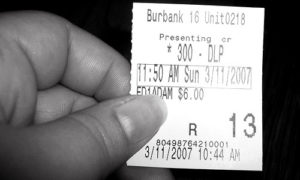 First, I don‚Äôt think the answer is an either/or. I think that we can legitimately ask ourselves why we find violence so compelling as entertainment, and whether or not that‚Äôs a good thing. I think the answers are pretty clear, and I think to divert away from the problem of sexual depictions in contemporary cinema by saying, ‚Äúyeah, but violence ‚Ķ‚ÄĚ is changing the subject. If you cats need me to come back and unpack the problems of violent entertainment for you next time around, I‚Äôll be pleased to do it. Today is about sex in art, so don‚Äôt divert your eyes as if this is the first time you have ever seen such a thing.
First, I don‚Äôt think the answer is an either/or. I think that we can legitimately ask ourselves why we find violence so compelling as entertainment, and whether or not that‚Äôs a good thing. I think the answers are pretty clear, and I think to divert away from the problem of sexual depictions in contemporary cinema by saying, ‚Äúyeah, but violence ‚Ķ‚ÄĚ is changing the subject. If you cats need me to come back and unpack the problems of violent entertainment for you next time around, I‚Äôll be pleased to do it. Today is about sex in art, so don‚Äôt divert your eyes as if this is the first time you have ever seen such a thing.



 Enter The Force. Obi-Wan informs Luke, ‚ÄúThe Force is what gives a Jedi his power. It’s an energy field created by all living things. It surrounds us and penetrates us. It binds the galaxy together.‚ÄĚ What do you think about The Force concept? What may be true about it? What may be wrong about it, but not harmful? What can be harmful about it?
Enter The Force. Obi-Wan informs Luke, ‚ÄúThe Force is what gives a Jedi his power. It’s an energy field created by all living things. It surrounds us and penetrates us. It binds the galaxy together.‚ÄĚ What do you think about The Force concept? What may be true about it? What may be wrong about it, but not harmful? What can be harmful about it?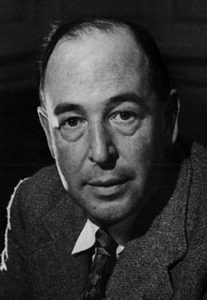
 ‚Äú‚Ķ I knew you were going to say that.‚ÄĚ As the Millennium Falcon is being pulled into the Death Star, Han Solo says what most people consider to be a bad word (when it‚Äôs used not to mean God‚Äôs eternal punishment). Obi-Wan said the same word earlier. This surprised me, mainly because I don‚Äôt recall these words appearing in other Star Wars films and they seem to be particularly modern slang. What do you think about this?
‚Äú‚Ķ I knew you were going to say that.‚ÄĚ As the Millennium Falcon is being pulled into the Death Star, Han Solo says what most people consider to be a bad word (when it‚Äôs used not to mean God‚Äôs eternal punishment). Obi-Wan said the same word earlier. This surprised me, mainly because I don‚Äôt recall these words appearing in other Star Wars films and they seem to be particularly modern slang. What do you think about this? Last battle. Until Star Wars released in 1977, audiences had not seen a space battle of this magnitude or with these kinds of effects. Even more than 35 years later, how does this battle captivate us and make us root for one side? What makes the bad guys bad?
Last battle. Until Star Wars released in 1977, audiences had not seen a space battle of this magnitude or with these kinds of effects. Even more than 35 years later, how does this battle captivate us and make us root for one side? What makes the bad guys bad?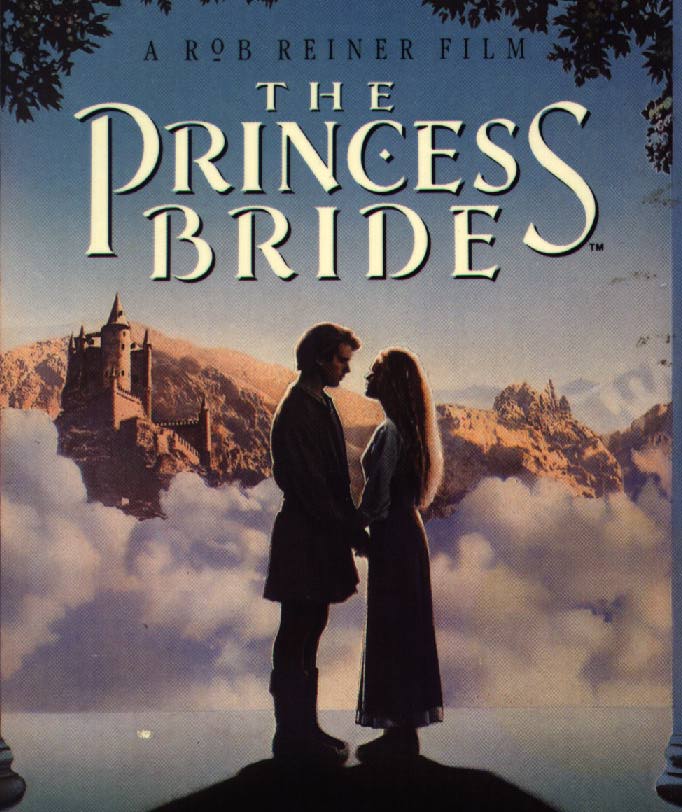

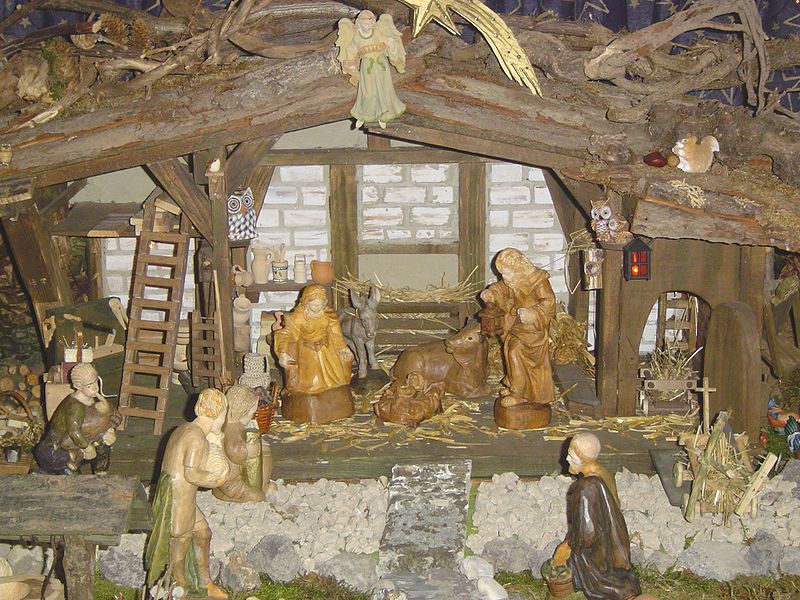
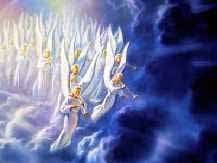 One thing I love about speculative fiction is the fact that it opens the door to the impossible. It expands our vision of reality.
One thing I love about speculative fiction is the fact that it opens the door to the impossible. It expands our vision of reality.  As if that wasn’t enough, a group of shepherds crowded into their quarters to worship her baby. Angels, they said, had told them about this child—where he’d be born and how they could find him and how they would know him.
As if that wasn’t enough, a group of shepherds crowded into their quarters to worship her baby. Angels, they said, had told them about this child—where he’d be born and how they could find him and how they would know him.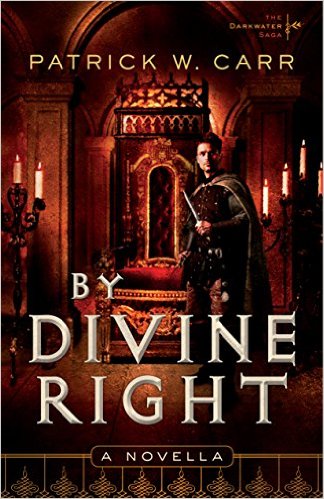
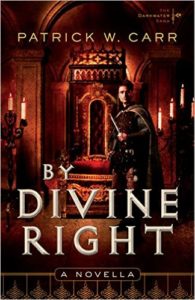

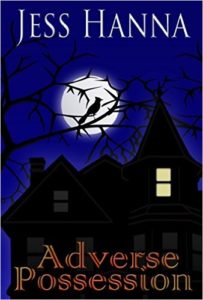

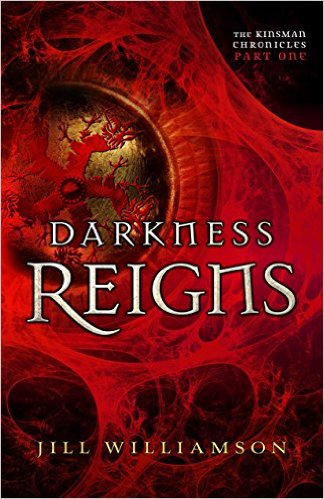

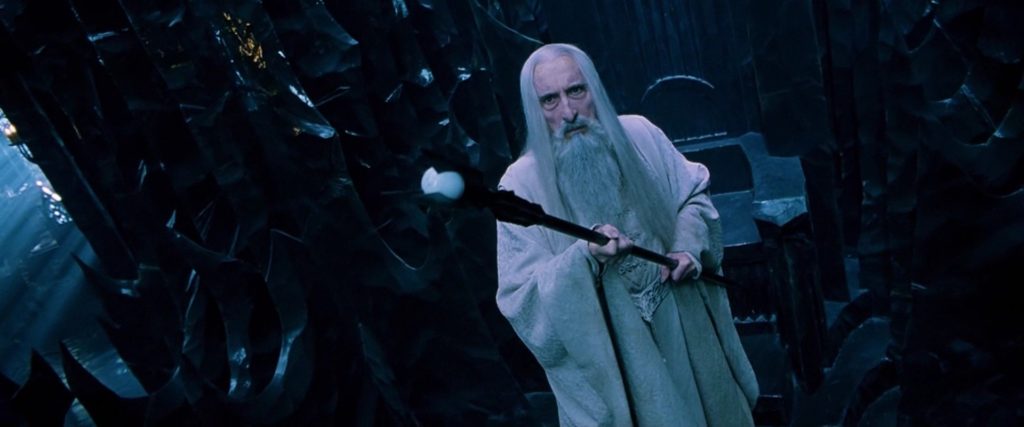

 Not all mayhem comes from attempted or actuated assault. Some is the result of corrupting influence. In The Two Towers Wormtongue, for instance, nearly handed the men of Rohan over to Saruman because of his poisonous council to King Th√©oden. Saruman himself turned traitor and held Gandalf captive, preventing him from meeting Frodo when he’d promised. In Lewis’s The Last Battle, Shift duped Puzzle into pretending to be Aslan, throwing Narnia into confusion. In The Silver Chair an enchantress held the true prince captive by a spell that made him forget who he was.
Not all mayhem comes from attempted or actuated assault. Some is the result of corrupting influence. In The Two Towers Wormtongue, for instance, nearly handed the men of Rohan over to Saruman because of his poisonous council to King Th√©oden. Saruman himself turned traitor and held Gandalf captive, preventing him from meeting Frodo when he’d promised. In Lewis’s The Last Battle, Shift duped Puzzle into pretending to be Aslan, throwing Narnia into confusion. In The Silver Chair an enchantress held the true prince captive by a spell that made him forget who he was. 



